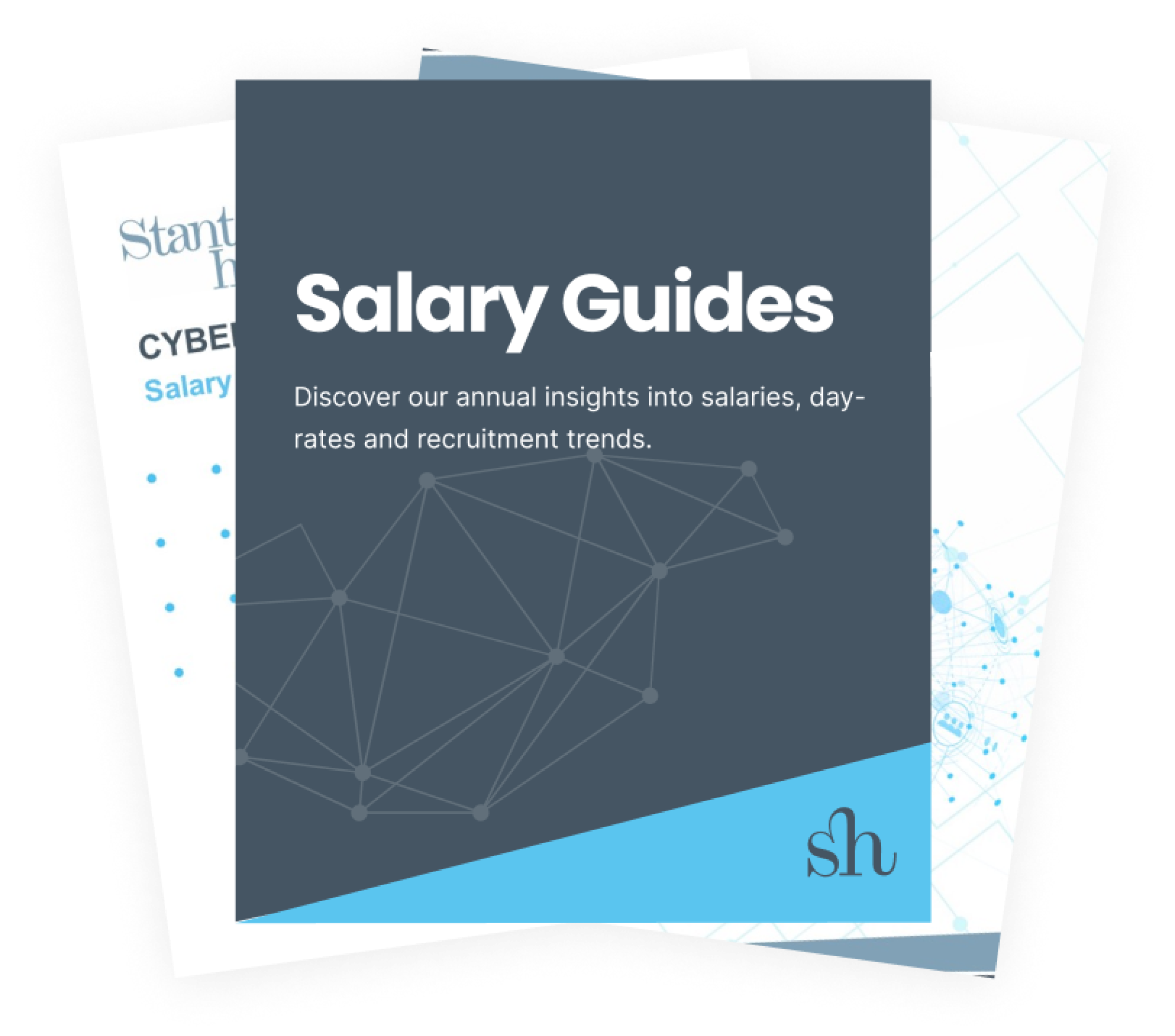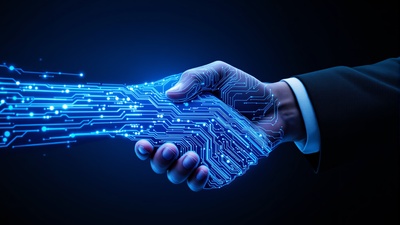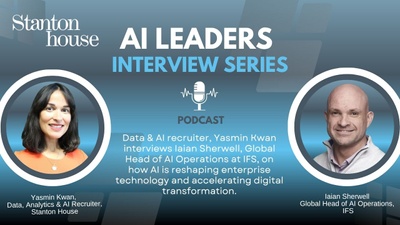
The Future of AI Engineering in Cybersecurity
The cybersecurity industry is undergoing a fundamental shift, with artificial intelligence (AI) playing a critical role in shaping the next generation of security products. In my daily conversations with cybersecurity leaders and AI engineers, one thing is clear: AI isn’t just enhancing security solutions; it’s redefining how businesses approach cyber defense altogether.
As a recruiter specializing in Product, Engineering & AI talent within the cybersecurity space, I work closely with companies building AI-driven security tools. Whether it’s startups pioneering autonomous threat detection or established vendors integrating machine learning into their platforms, the demand for AI engineers with security expertise has never been higher.
In this article, I’ll explore the key areas where AI is transforming cybersecurity product development and offer career tips on how engineers can position themselves for success in this rapidly evolving space.
1. Autonomous Threat Detection & Response
Organizations can no longer afford to rely on reactive security measures. AI-powered security platforms now leverage deep learning, behavioral analytics, and real-time threat intelligence to identify and neutralize attacks before they escalate.
Rather than relying on traditional rule-based detection methods, AI models are trained to recognize subtle deviations in network behavior, enabling autonomous, self-learning security systems. This shift is driving the need for engineers who can build and refine machine learning models that detect and mitigate threats in real time.
Career Tips:
- Develop expertise in adversarial machine learning. Attackers are already working on ways to manipulate AI-driven security systems. Understanding how to defend against adversarial attacks is a key skill.
- Gain hands-on experience with SOAR (Security Orchestration, Automation, and Response). Companies are looking for engineers who can integrate AI-driven threat detection with automated remediation.
- Master data pipeline engineering. AI-powered threat detection relies on massive datasets therefore knowing how to efficiently process and analyze security data is critical.
2. AI-Powered Endpoint Protection
Traditional endpoint security tools are struggling to keep up with evolving attack vectors meaning ransomware, supply chain attacks, and zero-day exploits are becoming more sophisticated. In response, security vendors are developing AI-driven Endpoint Detection and Response (EDR) and Extended Detection and Response (XDR) solutions that offer real-time, behavior-based protection.
These products don’t just block known threats; they analyze how applications and users interact with systems, flagging anomalous behavior before an attack takes hold. The engineers behind these solutions are building complex AI models that continuously adapt to new threats.
Career Tips:
- Strengthen your understanding of behavioral analytics. Security products are shifting from static detection to dynamic, behavior-based analysis.
- Learn about event correlation and security data lakes. AI-driven endpoint security depends on ingesting and analyzing massive amounts of security telemetry.
- Stay up to date on zero-trust security models. Endpoint protection is increasingly moving toward a zero-trust framework meaning engineers who understand this architecture will be in high demand.
3. AI in Cloud Security & DevSecOps
Cloud adoption continues to accelerate, and with it comes a new wave of security challenges. AI is playing a major role in Cloud Security Posture Management (CSPM), container security, and automated compliance monitoring.
One of the biggest shifts I’m seeing in the industry is the embedding of AI into DevSecOps pipelines. Rather than relying on periodic security assessments, companies are moving toward continuous, AI-driven risk assessment and automated remediation.
Career Tips:
- Become proficient in cloud security frameworks. AWS, Azure, and Google Cloud all have native AI-driven security tools and knowing how to work with them is a major advantage.
- Get hands-on with Infrastructure-as-Code (IaC) security. AI-powered security tools are increasingly being integrated into automated deployment pipelines.
- Understand AI-driven vulnerability scanning. DevSecOps engineers who can build and refine AI models for vulnerability detection will be in high demand.
4. AI-Enhanced Identity and Access Management (IAM)
With identity-based attacks on the rise, traditional IAM solutions are evolving into AI-powered adaptive authentication platforms. These tools analyze behavioral patterns, assign risk scores in real time, and dynamically adjust access permissions.
I’ve seen a major push from security vendors toward continuous identity verification moving beyond one-time authentication and into a model where user behavior is constantly assessed for anomalies. AI engineers are at the heart of this transformation, building systems that balance security with user experience.
Career Tips:
- Develop expertise in behavioral biometrics. Identity verification is increasingly relying on AI-driven behavioral analysis rather than static credentials.
- Learn about decentralized identity (DID) solutions. Blockchain-based authentication and federated identity models are gaining traction.
- Understand risk-based authentication. AI-powered IAM systems assign risk scores dynamically knowing how these models work, is a key skill.
5. Explainable AI (XAI) & Ethical AI in Cybersecurity
One of the biggest concerns I hear from security leaders is AI-driven decision-making transparency. AI security products need to provide clear, human-interpretable insights, otherwise, they risk compliance challenges and a lack of trust from customers.
Explainable AI (XAI) is becoming a major differentiator in cybersecurity products. Engineers who can build models that not only detect threats but also explain why an action was taken will be in high demand.
Career Tips:
- Master XAI frameworks. Tools like LIME and SHAP help make AI-driven security decisions interpretable.
- Stay informed on AI ethics and compliance. Understanding AI bias, fairness, and regulatory standards will be critical as AI continues to shape cybersecurity.
- Incorporate human-in-the-loop (HITL) models. AI security systems that allow human oversight will be more widely adopted in high-risk environments.
Final Thoughts and Key Takeaways: The AI Engineer’s Roadmap in Cybersecurity
The future of cybersecurity is AI-driven, and the engineers building these products have a unique opportunity to lead the charge. However, the field is evolving rapidly and staying ahead requires continuous learning and adaptability.
Build a strong foundation in machine learning and adversarial AI. Security threats are becoming more sophisticated andyour AI models need to keep up.
Master cloud security and DevSecOps. AI is transforming how companies secure cloud environments andengineers with cloud security expertise will be highly sought after.
Focus on explainability and trust. The best AI security products are not just effective but also transparent and accountable.
Stay adaptable. Cybersecurity is a constantly evolving field and engineers who embrace continuous learning will thrive.
The demand for top AI engineers in cybersecurity product development is skyrocketing, and businesses that invest in the right talent will lead the future of AI-driven security.
If you're an engineer looking to break into AI-driven cybersecurity, or a company looking to hire the best talent, let’s connect. At Stanton House, we specialize in matching top AI engineers with the companies shaping the future of cybersecurity.


















